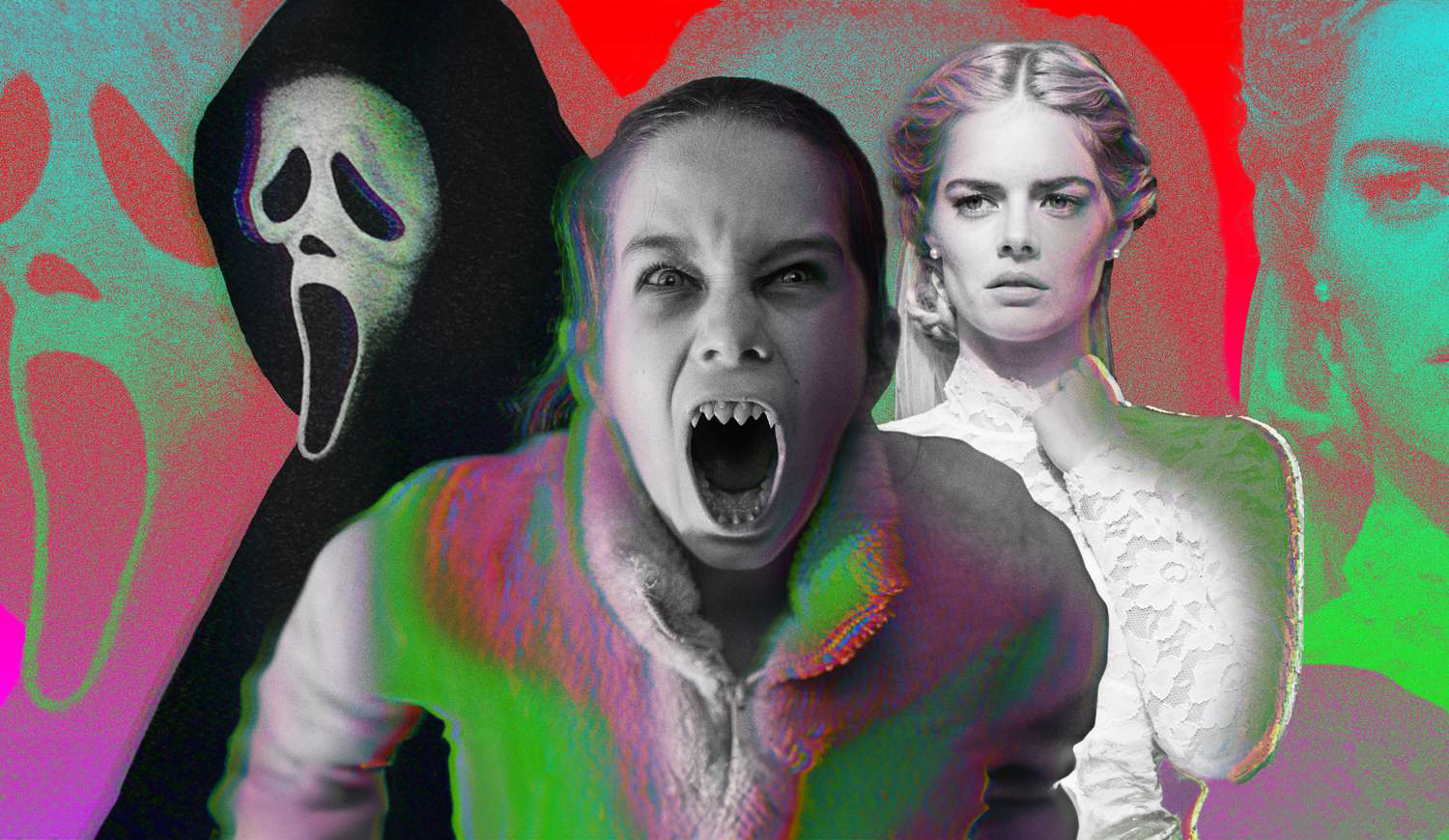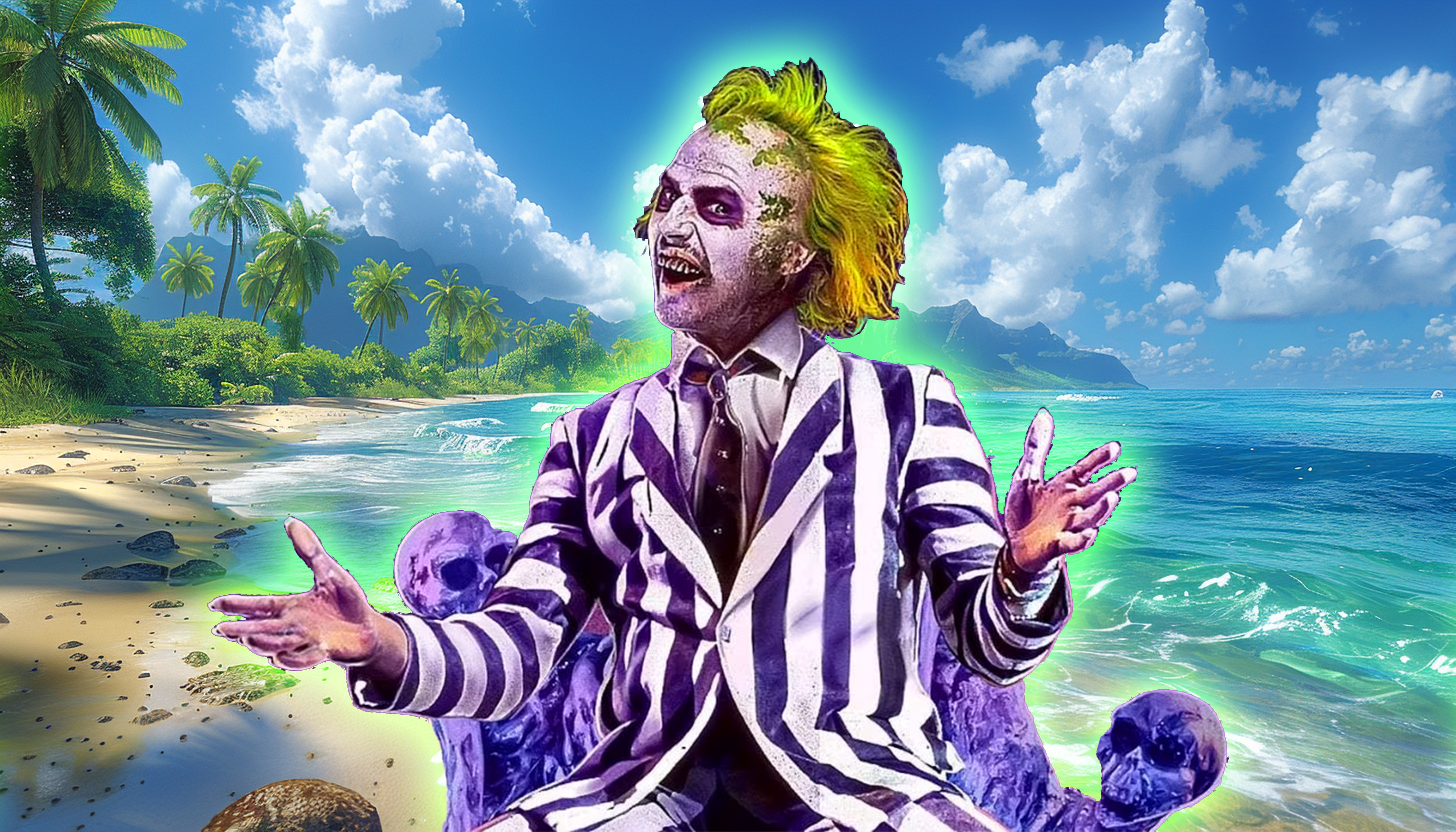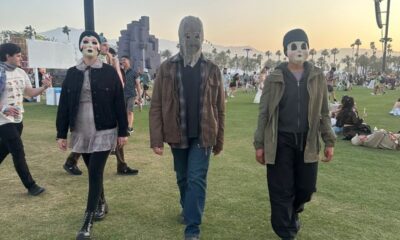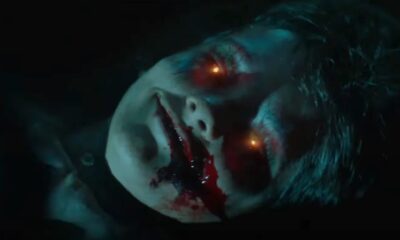News
iHorror Exclusive: Interview With ‘Proxy’ Director Zack Parker
Richmond, Indiana’s Zack Parker made a big mark in 2014 with the excellent and unpredictable Proxy. I had the film (which is currently available to stream on Netflix) at number 4 on my best of the year list, and to tell you the truth, I could easily move it to any spot above that on any given day. Out of all of the great movies of last year, few stuck with me as much as Proxy. If you haven’t seen it yet, I really can’t recommend it enough.
Proxy is also the kind of film that’s hard to discuss without giving too much away, so beware of that. You may find some spoilerish language below, so if that’s a concern, go watch the movie first. Besides, it’s one of those that’s almost certainly best when you go into it knowing as little about it as possible.
We had the chance to catch up with Parker, and discuss the film (among other things). So without further ado:
iHorror: From what did your interest in the mental condition that Proxy is based on stem?
Zack Parker: It’s always difficult to pinpoint where an idea comes from. I will say that I’m always trying to tackle a subject matter I haven’t seen before when starting a new film. It really just evolved out of several conversations Kevin Donner (my writing partner on the film) and I were having. Subject matter that was relevant to both of our lives at the time.
ZP: If there is anything I’ve learned over the course of making four features (and many shorts), it’s that you’re never going to please everyone. There is no sense in even trying. The only thing you can do is trust your own instincts as a storyteller and try to make the film that you would want to see. To me, every piece of the film that exists now, for the story I’m trying to tell, needs to be there.
ZP: This is the only version of the film that exists, and it is my cut. I’m never really conscious or concerned with running time when cutting a film. I’m trying to let the film dictate to me what it wants to be. When I get into the editing room (my favorite stage of filmmaking, btw), I try to forget about everything prior to that: the script, the shoot, etc.. They are now irrelevant. All that matters is the pieces you’ve accumulated. The film exists somewhere in those pieces, and it is now my job to find it.
iH: Proxy deals with some difficult subject matter. As a family man, did you find it difficult to work on at times, on an emotional level?
ZP: There are always going to be some parallels to your own life when writing something, and the fact that my own son is in the film gives me a connection to it that I haven’t experienced in previous work. But I try to stay objective to those connections, to avoid unnecessary influences that may water the film down.
iH: I’m originally from Indiana and still have a lot of family there, but had no idea there was such an interesting film community until recently. Two of the ten movies on my Best or 2014 list were filmed in Indiana – yours and Scott Schirmer’s Found. Can you just talk a little bit about the Indiana film scene? The pros and cons to making a movie in the state?
ZP: It’s a relatively small community, but there are certainly some talented people here. I think most struggle with getting their work to break the boundaries of the State, but that’s difficult for any indie film. Having no production tax incentives in Indiana doesn’t help lure or keep productions here as well.
iH: Music is so integral to a film’s effectiveness, particularly in horror and otherwise dark content, yet it seems like an afterthought in so many genre films. Can you discuss your approach to the use of music in Proxy and maybe give a few examples of your favorite uses of music in other films?
ZP: Well, The Newton Brothers have scored all of my films so far, and those guys are just brilliant. I honestly can’t imagine making a film without them. I like the music in my films to have real structure, not just be a source of atmosphere. Rarely do I have a scene with music and dialogue together, because I feel music should be used as a form of dialogue, almost another character in the film. In my opinion, guys like Kubrick, Hitchcock, and more recently von Trier are true masters of how to elevate film through music.
iH: Based on other interviews, I get the sense that you are a horror fan, but don’t necessarily consider yourself a horror filmmaker. As a fan, beyond the classics, what are some modern horror flicks you’ve been particularly fond of?
ZP: I am, of course, a fan of cinema in general. But I do tend to gravitate toward films that are a bit darker, take risks, and show me something I haven’t seen before, or perhaps present it in a way I haven’t seen.
I don’t really think about genre when making a film, I’m just making the story the only way I know how, filtered through whatever sensibilities I may possess. I understand why people may label PROXY as horror, as it certainly deals with pretty horrific circumstances, and there are much worse things than having your work embraced by one of the most passionate and loyal cinema communities that exist. Like any filmmaker, I just want people to see my work.
iH: I understand your next film is to be shot in Chicago. What can you tell us about that? Any timeframe on when we might see it?
'Civil War' Review: Is It Worth Watching?
Follow our new YouTube channel "Mysteries and Movies" here.

Lists
Thrills and Chills: Ranking ‘Radio Silence’ Films from Bloody Brilliant to Just Bloody

Matt Bettinelli-Olpin, Tyler Gillett, and Chad Villella are all filmmakers under the collective label called Radio Silence. Bettinelli-Olpin and Gillett are the primary directors under that moniker while Villella produces.
They have gained popularity over the past 13 years and their films have become known as having a certain Radio Silence “signature.” They are bloody, usually contain monsters, and have breakneck action sequences. Their recent film Abigail exemplifies that signature and is perhaps their best film yet. They are currently working on a reboot of John Carpenter’s Escape From New York.
We thought we would go through the list of projects they have directed and rank them from high to low. None of the movies and shorts on this list are bad, they all have their merits. These rankings from top to bottom are just ones we felt showcased their talents the best.
We didn’t include movies they produced but didn’t direct.
#1. Abigail
An update to the second film on this list, Abagail is the natural progression of Radio Silence’s love of lockdown horror. It follows in pretty much the same footsteps of Ready or Not, but manages to go one better — make it about vampires.
#2. Ready or Not
This film put Radio Silence on the map. While not as successful at the box office as some of their other films, Ready or Not proved that the team could step outside their limited anthology space and create a fun, thrilling, and bloody adventure-length film.
#3. Scream (2022)
While Scream will always be a polarizing franchise, this prequel, sequel, reboot — however you want to label it showed just how much Radio Silence knew the source material. It wasn’t lazy or cash-grabby, just a good time with legendary characters we love and new ones who grew on us.
#4 Southbound (The Way Out)
Radio Silence tosses their found footage modus operandi for this anthology film. Responsible for the bookend stories, they create a terrifying world in their segment titled The Way Out, which involves strange floating beings and some sort of time loop. It’s kind of the first time we see their work without a shaky cam. If we were to rank this entire film, it would remain at this position on the list.
#5. V/H/S (10/31/98)
The film that started it all for Radio Silence. Or should we say the segment that started it all. Even though this isn’t feature-length what they managed to do with the time they had was very good. Their chapter was titled 10/31/98, a found-footage short involving a group of friends who crash what they think is a staged exorcism only to learn not to assume things on Halloween night.
#6. Scream VI
Cranking up the action, moving to the big city and letting Ghostface use a shotgun, Scream VI turned the franchise on its head. Like their first one, this film played with canon and managed to win over a lot of fans in its direction, but alienated others for coloring too far outside the lines of Wes Craven’s beloved series. If any sequel was showing how the trope was going stale it was Scream VI, but it managed to squeeze some fresh blood out of this nearly three-decade mainstay.
#7. Devil’s Due
Fairly underrated, this, Radio Silence’s first feature-length film, is a sampler of things they took from V/H/S. It was filmed in an omnipresent found footage style, showcasing a form of possession, and features clueless men. Since this was their first bonafide major studio job it’s a wonderful touchstone to see how far they have come with their storytelling.
'Civil War' Review: Is It Worth Watching?
Follow our new YouTube channel "Mysteries and Movies" here.
News
Perhaps the Scariest, Most Disturbing Series of The Year

You may have never heard of Richard Gadd, but that will probably change after this month. His mini-series Baby Reindeer just hit Netflix and it’s a terrifying deep dive into abuse, addiction, and mental illness. What is even scarier is that it’s based on Gadd’s real-life hardships.
The crux of the story is about a man named Donny Dunn played by Gadd who wants to be a stand-up comedian, but it’s not working out so well thanks to stage fright stemming from his insecurity.
One day at his day job he meets a woman named Martha, played to unhinged perfection by Jessica Gunning, who is instantly charmed by Donny’s kindness and good looks. It doesn’t take long before she nicknames him “Baby Reindeer” and begins to relentlessly stalk him. But that is just the apex of Donny’s problems, he has his own incredibly disturbing issues.
This mini-series should come with a lot of triggers, so just be warned it is not for the faint of heart. The horrors here don’t come from blood and gore, but from physical and mental abuse that go beyond any physiological thriller you may have ever seen.
“It’s very emotionally true, obviously: I was severely stalked and severely abused,” Gadd said to People, explaining why he changed some aspects of the story. “But we wanted it to exist in the sphere of art, as well as protect the people it’s based on.”
The series has gained momentum thanks to positive word-of-mouth, and Gadd is getting used to the notoriety.
“It’s clearly struck a chord,” he told The Guardian. “I really did believe in it, but it’s taken off so quickly that I do feel a bit windswept.”
You can stream Baby Reindeer on Netflix right now.
If you or someone you know has been sexually assaulted, please contact the National Sexual Assault Hotline at 1-800-656-HOPE (4673) or go to rainn.org.
'Civil War' Review: Is It Worth Watching?
Follow our new YouTube channel "Mysteries and Movies" here.
Movies
The Original ‘Beetlejuice’ Sequel Had an Interesting Location

Back in the late ’80s and early ’90s sequels to hit movies weren’t as linear as they are today. It was more like “let’s re-do the situation but in a different location.” Remember Speed 2, or National Lampoon’s European Vacation? Even Aliens, as good as it is, follows a lot of the plot points of the original; people stuck on a ship, an android, a little girl in peril instead of a cat. So it makes sense that one of the most popular supernatural comedies of all time, Beetlejuice would follow the same pattern.
In 1991 Tim Burton was interested in doing a sequel to his 1988 original, it was called Beetlejuice Goes Hawaiian:
“The Deetz family moves to Hawaii to develop a resort. Construction begins, and it’s quickly discovered that the hotel will be sitting on top of an ancient burial ground. Beetlejuice comes in to save the day.”
Burton liked the script but wanted some re-writes so he asked then-hot screenwriter Daniel Waters who had just got done contributing to Heathers. He passed on the opportunity so producer David Geffen offered it to Troop Beverly Hills scribe Pamela Norris to no avail.
Eventually, Warner Bros. asked Kevin Smith to punch up Beetlejuice Goes Hawaiian, he scoffed at the idea, saying, “Didn’t we say all we needed to say in the first Beetlejuice? Must we go tropical?”
Nine years later the sequel was killed. The studio said Winona Ryder was now too old for the part and an entire re-cast needed to happen. But Burton never gave up, there were a lot of directions he wanted to take his characters, including a Disney crossover.
“We talked about lots of different things,” the director said in Entertainment Weekly. “That was early on when we were going, Beetlejuice and the Haunted Mansion, Beetlejuice Goes West, whatever. Lots of things came up.”
Fast-forward to 2011 when another script was pitched for a sequel. This time the writer of Burton’s Dark Shadows, Seth Grahame-Smith was hired and he wanted to make sure the story wasn’t a cash-grabbing remake or reboot. Four years later, in 2015, a script was approved with both Ryder and Keaton saying they would return to their respective roles. In 2017 that script was revamped and then eventually shelved in 2019.
During the time the sequel script was being tossed around in Hollywood, in 2016 an artist named Alex Murillo posted what looked like one-sheets for a Beetlejuice sequel. Although they were fabricated and had no affiliation with Warner Bros. people thought they were real.
Perhaps the virality of the artwork sparked interest in a Beetlejuice sequel once again, and finally, it was confirmed in 2022 Beetlejuice 2 had a green light from a script written by Wednesday writers Alfred Gough and Miles Millar. The star of that series Jenna Ortega signed on to the new movie with filming starting in 2023. It was also confirmed that Danny Elfman would return to do the score.
Burton and Keaton agreed that the new film titled Beetlejuice, Beetlejuice wouldn’t rely on CGI or other other forms of technology. They wanted the film to feel “handmade.” The film wrapped in November 2023.
It’s been over three decades to come up with a sequel to Beetlejuice. Hopefully, since they said aloha to Beetlejuice Goes Hawaiian there has been enough time and creativity to ensure Beetlejuice, Beetlejuice will not only honor the characters, but fans of the original.
Beetlejuice, Beetlejuice will open theatrically on September 6.
'Civil War' Review: Is It Worth Watching?
Follow our new YouTube channel "Mysteries and Movies" here.
-

 News5 days ago
News5 days agoWoman Brings Corpse Into Bank To Sign Loan Papers
-

 News6 days ago
News6 days agoHome Depot’s 12-Foot Skeleton Returns with a New Friend, Plus New Life-Size Prop from Spirit Halloween
-

 News4 days ago
News4 days agoBrad Dourif Says He’s Retiring Except For One Important Role
-

 Strange and Unusual5 days ago
Strange and Unusual5 days agoMan Arrested for Allegedly Taking a Severed Leg From Crash Site And Eating It
-

 Movies5 days ago
Movies5 days agoPart Concert, Part Horror Movie M. Night Shyamalan’s ‘Trap’ Trailer Released
-

 Movies6 days ago
Movies6 days ago‘The Strangers’ Invaded Coachella in Instagramable PR Stunt
-

 Movies5 days ago
Movies5 days agoAnother Creepy Spider Movie Hits Shudder This Month
-

 Movies6 days ago
Movies6 days agoRenny Harlin’s Recent Horror Movie ‘Refuge’ Releasing in U.S. This Month


















You must be logged in to post a comment Login